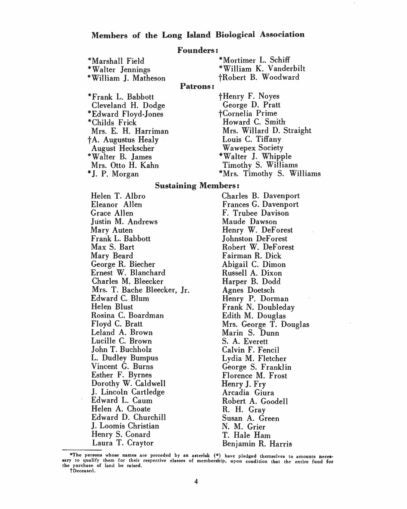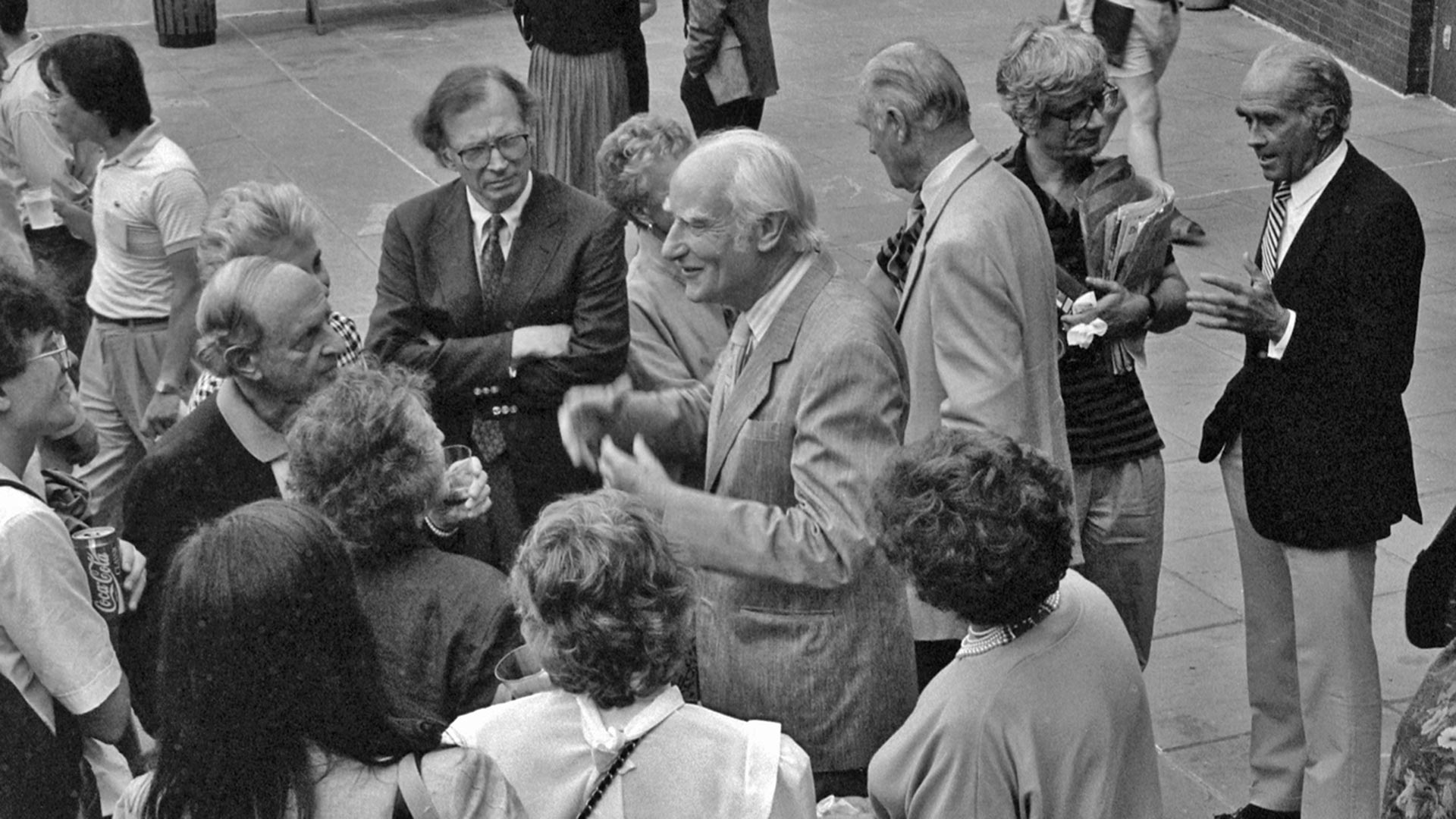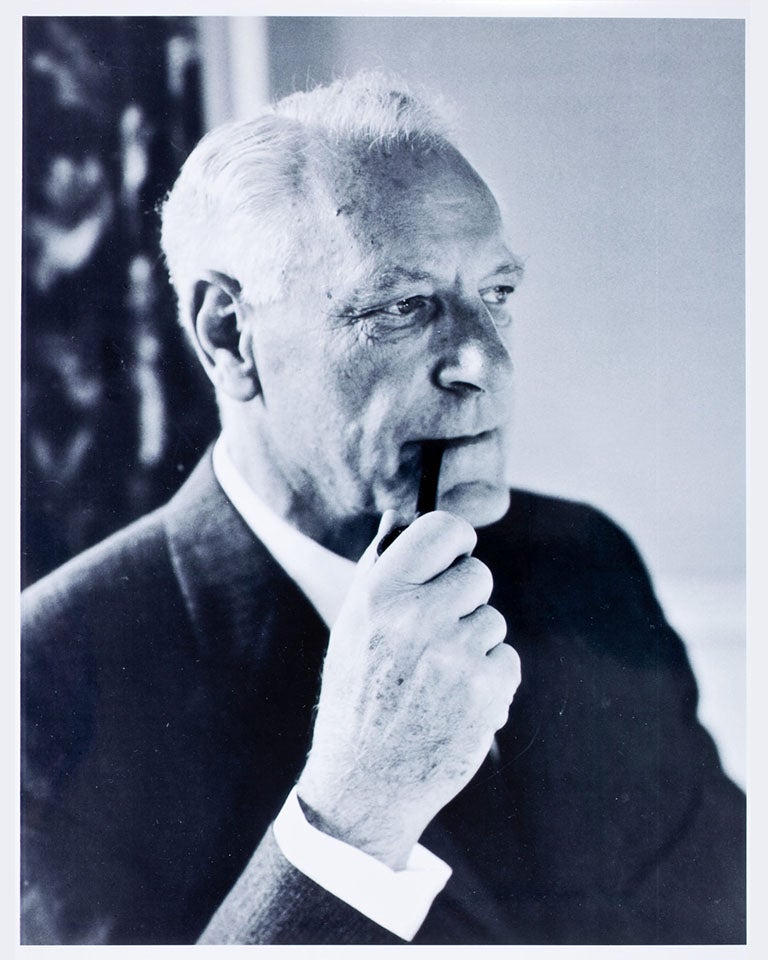How do you turn a small but influential science education outpost into one of the world’s leading destinations for breakthrough bioscience? It takes a village.
This year marks the centennial anniversary of the formation of the Cold Spring Harbor Laboratory Association (CSHLA). Formerly known as the Long Island Biological Association (LIBA), the CSHLA is a remarkable group with a remarkable history. Though founded in 1924, its origins lie in the 19th century.
The early years
In 1890, the Brooklyn Institute of Arts and Sciences (BIAS) established the Biological Laboratory at Cold Spring Harbor as a summer school for training biology teachers and students. Early courses covered topics such as zoology, variation and inheritance, embryology, bacteriology, and ecology. Initially housed in the New York State Fish Hatchery, the Laboratory moved across the road to land provided by the Jones family, which later set up a nonprofit corporation called the Wawepex Society to hold a title for the property. New Yorkers will recognize the name ‘Jones’ for its connection to Jones Beach. The phrase “keeping up with the Joneses” also refers to this family.

Through the beginning of the 20th century, the Laboratory’s relationship with BIAS became increasingly fraught. Things came to a head in 1914 when the director of the Laboratory threatened to resign. In response, the Laboratory was made a department of BIAS. Then, in 1917, efforts were renewed to create an endowment for the Laboratory. Through the generosity of a small number of local supporters—including Louis Comfort Tiffany, William John Matheson, Walter Jennings, August Heckscher, and Cornelia Prime—the remarkable sum of $27,000 was raised in just eight months. To put that in context, $27,000 in 1917 equals about $700,000 in 2024.
At this point, the Laboratory’s director was also running two additional institutes on the Cold Spring Harbor campus. In 1921, he resigned from his post, citing these other responsibilities. However, he suggested various measures to mitigate such conflicts moving forward. In particular, he advocated for BIAS to hand over control of the Biological Laboratory at Cold Spring Harbor to an association of neighbors. The group would include those local residents who’d so generously contributed to the 1917 endowment. There would be a new director and a scientific advisory board to offer guidance. BIAS raised no objections to this proposal, and a charter was drawn up for the Long Island Biological Association.
In August 1923, a local organization of neighbors voted to form the Association. On February 18, 1924, LIBA was incorporated. One week later, the first meeting of the Board of Directors was held. The group adopted bylaws and appointed Dr. Reginald Harris as its founding director. On March 12, the Brooklyn Institute formally turned over its buildings along with its endowment and scholarship funds. The Wawepex Society transferred ownership of Jones Laboratory and drafted a 50-year lease for the grounds.
The 1924 Biological Laboratory Annual Report (pdf) listed LIBA’s first members. There were six “Founding Members” and 19 “Patrons” who each contributed $5,000 and $500, respectively. There were also more than 170 “Sustaining Members” whose combined contributions totaled $1,700. The membership list includes such illustrious names as J.P. Morgan, W.K. Vanderbilt, Marshall Field III, Henry De Forest, Charles Frick, Walter James, Mrs. Otto Kahn (Addie Wolff), August Heckscher, and Louis Tiffany.

LIBA’s importance to the Biological Laboratory became immediately apparent. In 1926, LIBA members raised the funds needed to purchase 32.5 acres of land adjacent to the Laboratory. The following year, Mr. and Mrs. Acosta Nichols donated $12,000 for the construction of a lab in memory of their son George, who had taken part in a nature studies class held on campus.
LIBA also became known across the region for its impressive “Gold Coast” galas. One example took place in 1932. It was during this year that the Field family held a grand fundraising event at Caumsett, their estate in Lloyd Harbor, NY. Attended by celebrities such as Fred Astaire, the gala included activities like dancing and china breaking. (“China breaking” is exactly what it sounds like. The activity was overseen by prominent businessman Vincent Astor.) All told, the event raised over $4,500—i.e., $99,000 in 2024 dollars. Through the 1940s and 1950s, LIBA members contributed between 7% and 10% of the Biological Laboratory’s income.
The modern era
LIBA’s modern era began in 1962 when the institute we now know as Cold Spring Harbor Laboratory first took the name of its neighboring community. It was during this year that the Carnegie Institution closed the Department of Genetics. Its land and buildings were combined with those of the Biological Laboratory to create the Cold Spring Harbor Laboratory of Quantitative Biology. (The name would be shortened to Cold Spring Harbor Laboratory in 1970.) LIBA did not have any direct responsibility for governing the new institute. However, the Association did retain two places on the new Board of Trustees. It now fully devoted itself to ambassadorship and fundraising. And it accomplished these goals with great success.

For example, in 1972, LIBA Chairman Edward Pulling led a campaign that raised $250,000 for a new addition to Jones Laboratory. A few years later, he helped raise $225,000 to build a new Williams House and another $200,000 to purchase land still owned by the Carnegie Institution.

In one historic gift, LIBA contributed $600,000 toward the cost of the Oliver and Lorraine Grace Auditorium. Grace is the primary venue for CSHL’s world-renowned Meetings & Courses Program. This program has brought hundreds of thousands of leading scientists to Cold Spring Harbor. Here, they’ve discussed their latest research, shared ideas with potential collaborators, and planted the seeds of countless breakthroughs. So, while $600,000 may sound like a lot, there’s really no way to quantify the return on this investment.
In 1992, LIBA officially became the Cold Spring Harbor Laboratory Association (CSHLA). The Association has since furthered its mission to provide CSHL with much-needed philanthropic support. Over the past 10 years, CSHLA members have helped raise an extraordinary $80 million in unrestricted funding for the Laboratory. Indeed, many of the labs and other facilities found across campus today owe their existence to CSHLA members.
Of course, a lot has changed since the early days. After all, today’s Association gatherings are unlikely to break out in spontaneous bouts of china breaking. Nevertheless, CSHLA continues to bring some of Long Island’s best and brightest together for a worthy cause. Current Association Directors include acclaimed actress Susan Lucci and the late best-selling novelist Nelson DeMille, among many other prominent community members.
For over 100 years, LIBA and CSHLA have played an essential role in supporting the advancement of science at Cold Spring Harbor. Its members and their community have transformed a small summer school into one of the world’s most renowned institutes for cutting-edge science research and education. This is a proud legacy, to say the least—one that holds great promise and potential for the next 100 years.
Written by: Jan A. Witowski, Special Advisor | 516-367-8398
